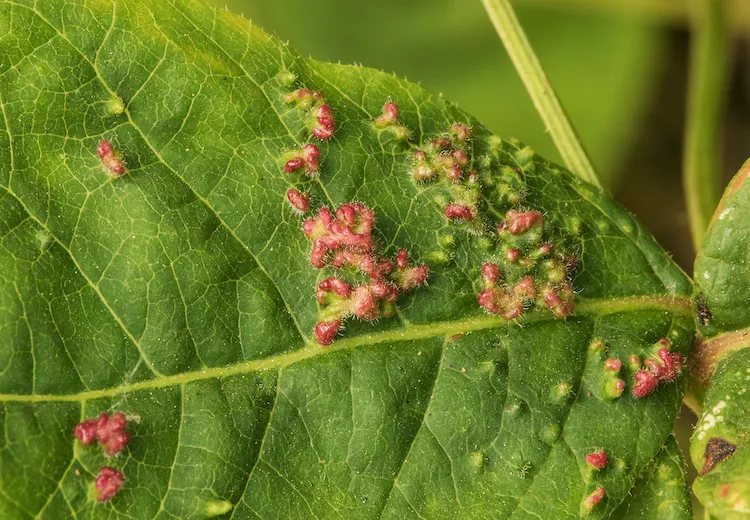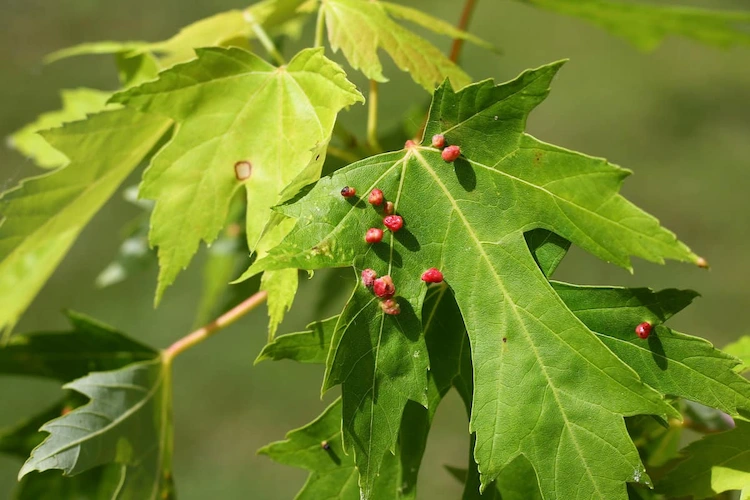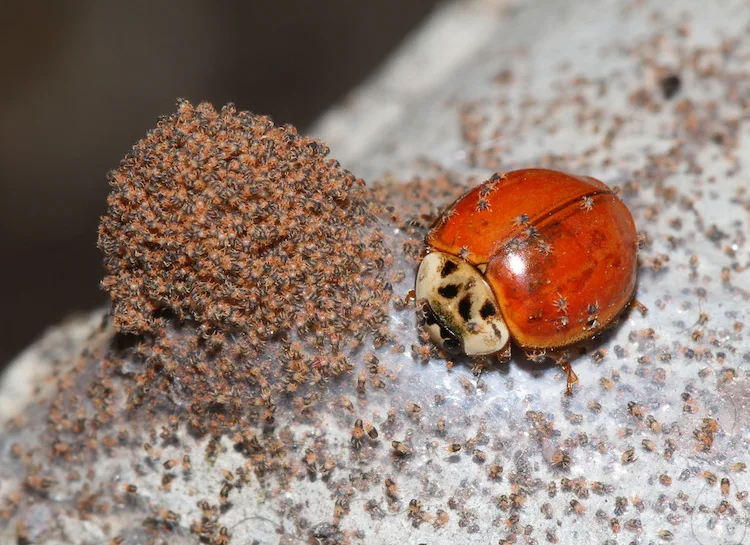It is very annoying for every gardener when their plants are attacked by pests. There are pests that are difficult to distinguish, but they can deform a plant when they are numerous. Gall mites are microscopic animals, only a quarter of a millimeter long. They feed on plant saps and damage plants by causing growths (or galls). The pests are very difficult to spot, but one can easily see the swelling and deformation they cause. We will show you how to fight gall mites naturally.
How do you recognize a gall mite infestation?
There are many types of gall mites. There are species specific to apple, beech, birch, hazel, plum, sycamore, walnut and other trees. An infestation will result in the plant no longer producing healthy leaves and flowers. The pests spread quickly. Most species of gall mite overwinter as females on host plants in bark crevices. In the spring, the gall mites begin to feed and lay eggs.
Leaves affected by the pests have excessive hairiness. A damaged plant will have enlarged buds and blistering of the foliage and hard, raised bumps on the surface of the leaves.
What types of galls do the pests cause?

Galls can be of different shapes and colors. They can be yellowish bumpy spots on green leaves. Leaf galls form on the leaf blades or petioles. The most common galls are seen as leaf ruffles, blisters, nipples, or erineums (hairy, felt-like growths) on the upper or lower leaf surface. One can also discover stem and branch galls on the plants. These are deformed growths on stems and branches. They can be slight swellings or large knot-like growths. Bud or flower galls are also often found in a gall mite infestation. They result in deformed size and shape of buds and flowers.
How to get rid of gall mites naturally?

In the case of a light infestation, you can simply remove the galls and any infested leaves or shoots. This is the quickest way to get rid of gall mites. If you cut off the infested leaves and branches, you minimize the population of the pests. To remove the mites from the plant, first cut off all affected branches at least two nodes below the affected area. Use clean scissors. Be careful not to spread the mites to surrounding plants as they can easily infest them.
If the infestation is minor, the plant cannot be harmed. However, it can become a problem when the galls are numerous on very young plants. Damage can occur when there are many galls on the branches or when they occur several years in a row. What to do? You can combat gall mites naturally by using some simple home remedies. Below we give you some effective tips and suggestions to combat the gall mites. Try these remedies.
Insecticidal soap against the pests
If your plants are heavily infested, you can use some home remedies to control the pests. You can buy an insecticidal soap that will kill gall mites. You can also make your own home remedy. Here’s a simple recipe. Follow these steps: Simply mix 2 ½ tablespoons vegetable oil with 2 ½ tablespoons organic liquid soap in 4 L gallon of water. Shake well and apply to plants. You can also apply insecticidal soap or oil to the entire plant once it’s susceptible to get rid of the remaining mites. Once you apply the soap, you should continue to use it every 7 to 10 days to completely eradicate the mites.
Nettle to combat gall mites
A nettle slurry has also been shown to be effective against gall mites. Here is the prescription. Crush 1kg of nettles and soak them in 10L of water. Cover the container tightly and let the mixture soak for 3 days, stirring occasionally. Then filter the mixture and spray the plants liberally several times every 3 to 4 days until the pests are gone.
Attract ladybugs to the garden

Gardeners know that ladybugs are a good choice when it comes to biological control of outdoor pests because they feed on mites and other plant pests and can help get rid of them quickly. Plus, they won’t harm your plants and are really easy to use. You just have to release them near the infested plants and let them do their job. If you want to attract ladybugs, plant herbs like cilantro, fennel, and dill. Ladybugs also like living in well-watered gardens as they need to drink frequently.
Combat gall mites with lacewings
These beneficial insects are very helpful when it comes to controlling gall mites. How to lure them into your outdoor space? Some plants come to the rescue! Plants that attract beneficial insects such as lacewings include: dill, oregano, cosmos, coreopsis, asters, elecampane, verbena, daisies, and others.
Use garlic and oil

A simple garlic and oil recipe can save your plants from those pesky gall mites. Use a homemade mixture of 100g garlic and 20ml oil, soaked for 24 hours. Then add 1 liter of water and 10 ml of pure curd soap. Before using the mixture, dilute it in a ratio of 1:20.